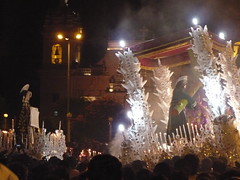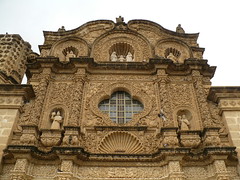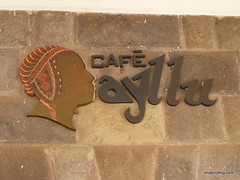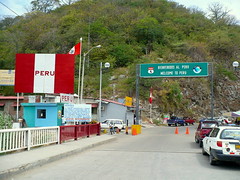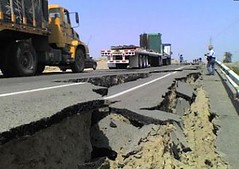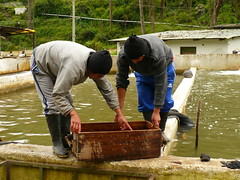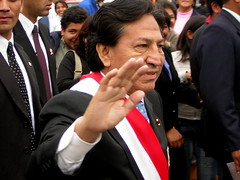Glorious Pre-Columbian Lima
Part of the Lima PreColombina series
When Francisco Pizarro arrived in the Rimac valley, founding the city of Los Reyes on the 18th of January 1535, he arrived in place quite different from what you might imagine. Here was an expansive green and fertile land, in the middle of the Peruvian desert coast, home tens of thousands living under the rule of the Incas. Where Lima is found today was once a land of pyramids and palaces, cities and farms, with complex irrigation canals spanning kilometres in length bringing water to every home.
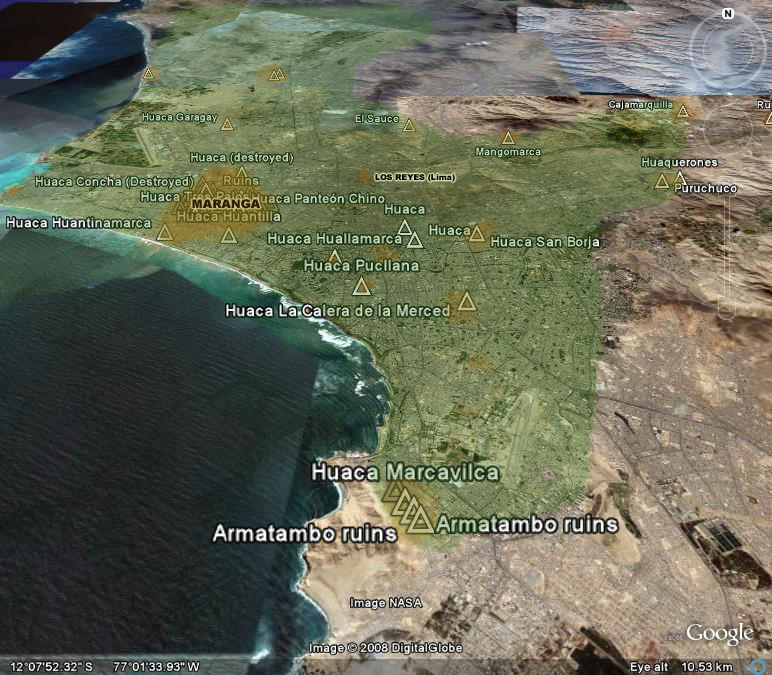
Area of Modern-day Lima Metropolitana at the time of the arrival of the Spanish. Note the small newly-founded Spanish city of Los Reyes and the large indigenous city of Maranga and the dozens of small indigenous settlements. Triangular icons show where ruins are visible today.
The Lima Culture is the name given to the indigenous people who lived between the Chillón and Lurín valleys – what today is the city of Lima. It is not known what these people called themselves, but the word Lima is thought to come from the Quechua word “Limaq” which means To Talk or Talking. Limaq is the word the natives, then ruled by the Incas and speaking Quechua, called the Rimac river. The Spanish kept the name Rimac (L and R being the same in Quechua) to mean the river, which then had the Rimac district named after it, and called their new capital Los Reyes. This didn’t catch on with the natives and people soon started referring to Los Reyes as “Lima”.
Developing in the area from the year 200AD, they were conquered by the Wari around 650AD, then by the Incas in 1450AD. Over the centuries the population grew, as did their sophistication. Not far from the river Rimac they built huge cities with monumental pyramids such as Maranga, which was once 4 square-kilometres in size and one of the largest urban areas in ancient Peru. In the south was Pachacamac, a religious centre that was home to the Andean world’s most important oracles and to thousands of people. Pilgrims came here from across the Wari empire, then the Inca empire to pay homage, the Incas even adapting their religion to encompass the one practised here.
 But it wasn’t the huge pyramids or huacas that the Lima Culture, later called the Ischma based on the name the area was given by the governing Incas at the time of Pizarro’s conquest, but awe-inspiring feats of engineering in the form of irrigation channels. From modern day Callao to Ate, from Rimac to Chorrillos, from Magdalena to La Molina – all was green fertile land that was all artificially created.
But it wasn’t the huge pyramids or huacas that the Lima Culture, later called the Ischma based on the name the area was given by the governing Incas at the time of Pizarro’s conquest, but awe-inspiring feats of engineering in the form of irrigation channels. From modern day Callao to Ate, from Rimac to Chorrillos, from Magdalena to La Molina – all was green fertile land that was all artificially created.
If there was one thing pre-Columbian cultures could do well it was water engineering. The Andean people had running water on the peaks of mountains while coastal people had huge irrigation canals running for tens of kilometres.
Running from the Rimac river to the south were countless numbers of canals, the largest ones being the Maranga, Huatica and Surco. Covering such utterly long distances, the Spanish couldn’t believe they were artificial and decided they must be rivers. According to chronicler Garcilaso de la Vega the Spanish were shocked to see that there were aqueducts watering all the fields and bringing water to all the homes in the area. This feat, the skill of this engineering, must not be understated. As investigator Charles R. Ortloff states, the techniques used in Peru’s ancient hydraulic engineering were not discovered in the west until the 20th century. Many of these water channels were destroyed or replaced in the Republican era because they were considered inferior, but some still exist today and are surprisingly still in use with few people knowing their origins – a prime example being the “Río” Surco that runs from the Rimac river and through the district of Santiago de Surco.
So, Lima’s history did not begin with its founding, nor with the Spanish. The area is as rich in history and archaeological treasures as any other part of Peru. Dozens of huacas still dot the city, some restored liked the Huaca Pucllana, other’s in ruins such as the Mateo Salado or the much more ancient Huaca San Marcos. With the new-found respect that is emerging in Peru for its rich heritage, we can only hope no more of it is lost in the name of progress and all things new.
Tags: chillon valley, garcilaso de la vega, huaca, huaca mateo salado, huaca pucllana, incas, lima, lima precolombina, lurin valley, maranga, rimac, rimac valley, ruins, spaniards, surco, water channels



